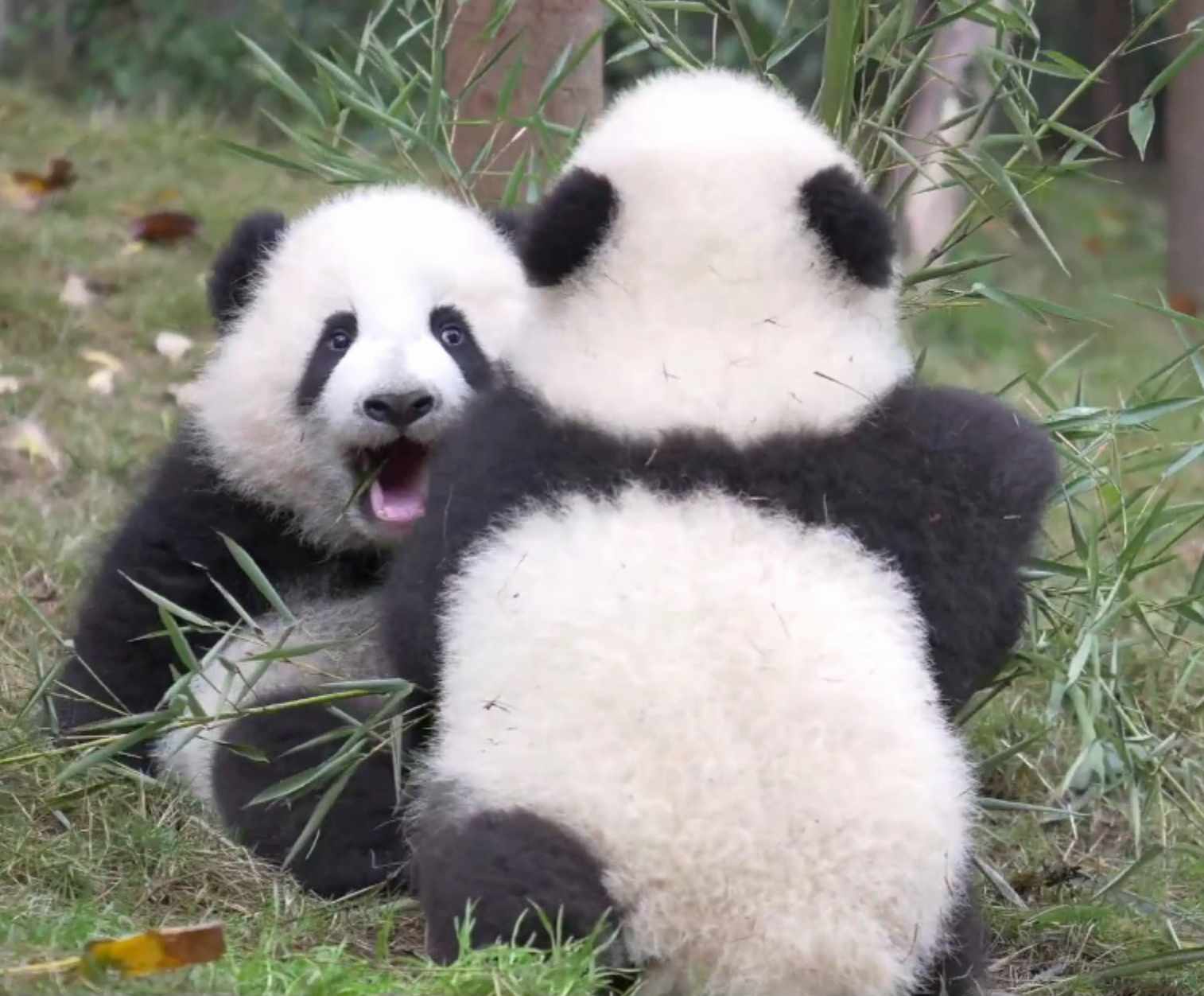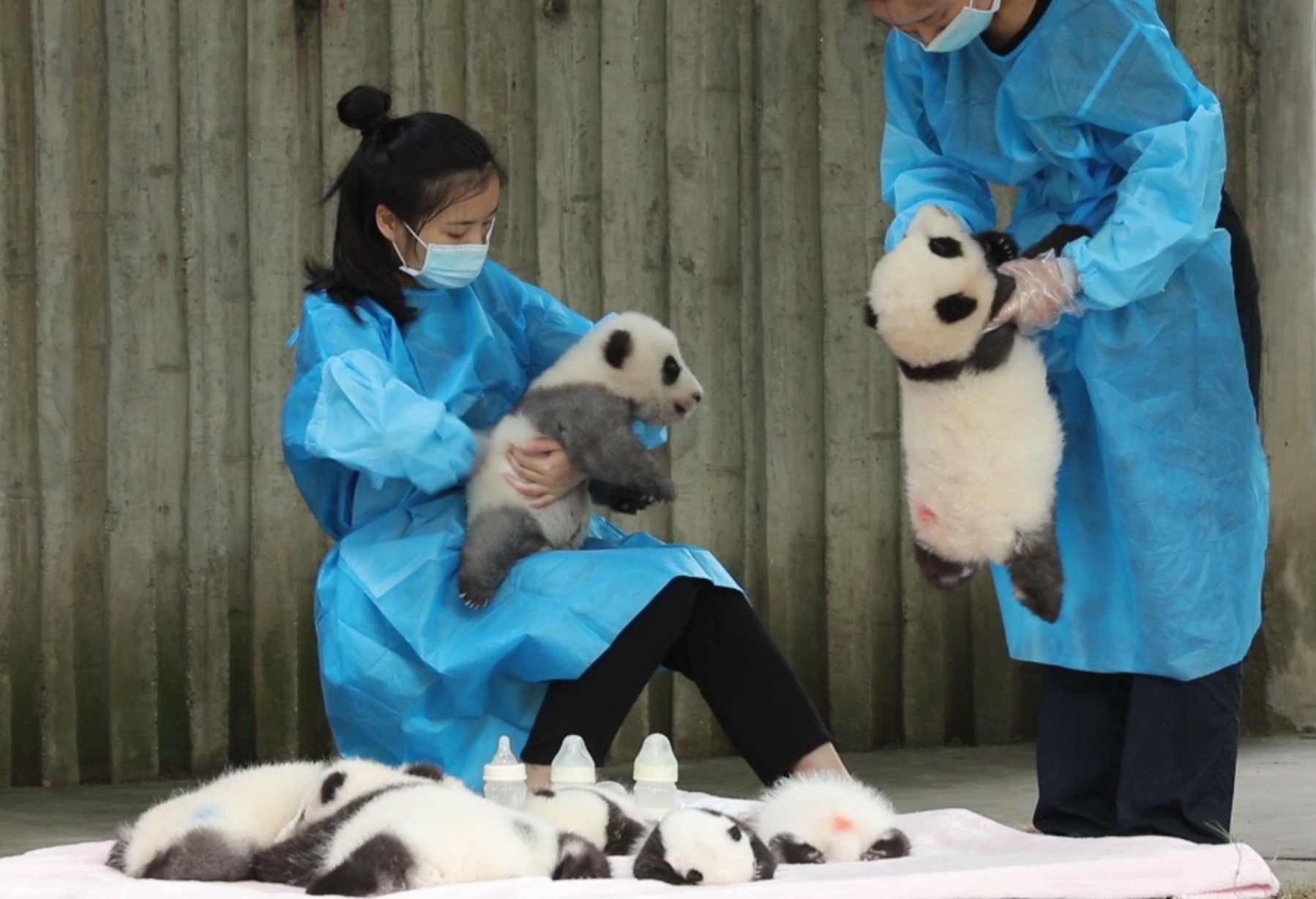
Story
15:56, 15-Mar-2019
'Giant panda's mom' pushes legislation for China's giant panda national parks
By Liu Yang

Wildlife protection has been one of the hot-button subjects in China lately as the country has put ecological protection on the agenda. Especially in the case of the giant panda, tremendous efforts to conserve the species have been made.
The country's pilot Giant Panda National Park will cover 27,134 square kilometers and span parts of southwest China's Sichuan, northwest China's Gansu and Shaanxi Provinces.
However, it could take years to complete. And the protection needs the help of the law in prohibiting poaching, mining and road construction.

Giant pandas play games. /Photo courtesy of Chengdu Research Base of Giant Panda Breeding
Giant pandas play games. /Photo courtesy of Chengdu Research Base of Giant Panda Breeding
One of the National People's Congress (NPC) delegates, Hou Rong, has been devoting herself to the field for nearly 30 years. Regarded as the "Giant panda's mom", her job is to push legislation for China's giant panda national parks.
"In the 1980s, over 100 giant pandas died of starvation and disease," says Hou. "The total number of wild giant pandas dropped to 1,000 in the '80s from 3,000 in the '70s. Our scientists treated six sick giant pandas in 1987, and since then, the giant panda Chengdu research base has raised 195 captive giant pandas."
The Base has the world's largest artificially bred population of captive giant pandas.

Feeding the new born giant panda. /Photo courtesy of Chengdu Research Base of Giant Panda Breeding
Feeding the new born giant panda. /Photo courtesy of Chengdu Research Base of Giant Panda Breeding
The rearing of twin cubs is supported by improved artificial insemination technology. Since 1990, this has increased their survival rate from 30 to 70 percent, and kept the species genetically diverse. Their population in China has increased to 1,800 in the wild, and 500 in captivity in recent years.
Hou feels grateful that scientists have been focusing on breeding research. Had there not been the eco-protection and scientific advancement, the species might have been closer to extinction.
"When I first started my career, I set a goal: Before I retire in 40 years, giant pandas would have a self-sustaining captive population. However, in the last 20 years, medical technology has helped us reach that goal already," says Hou.

Giant panda cubs and their nurses. /Photo courtesy of Chengdu Research Base of Giant Panda Breeding
Giant panda cubs and their nurses. /Photo courtesy of Chengdu Research Base of Giant Panda Breeding
Giant pandas have roamed the Earth for millions of years, and mostly in Chinese territory. However, their living habitats are constantly facing threats, such as from infrastructure building.
There are contradictions between ecological protection and economic development. That being said, protecting the ecosystem will bring benefits in the long run, much more than just clean water and air. And protecting wildlife is tantamount to protecting the whole planet.
(Cover image via VCG.)
(If you want to contribute and have specific expertise, please contact us at nature@cgtn.com)

SITEMAP
Copyright © 2018 CGTN. Beijing ICP prepared NO.16065310-3
Copyright © 2018 CGTN. Beijing ICP prepared NO.16065310-3